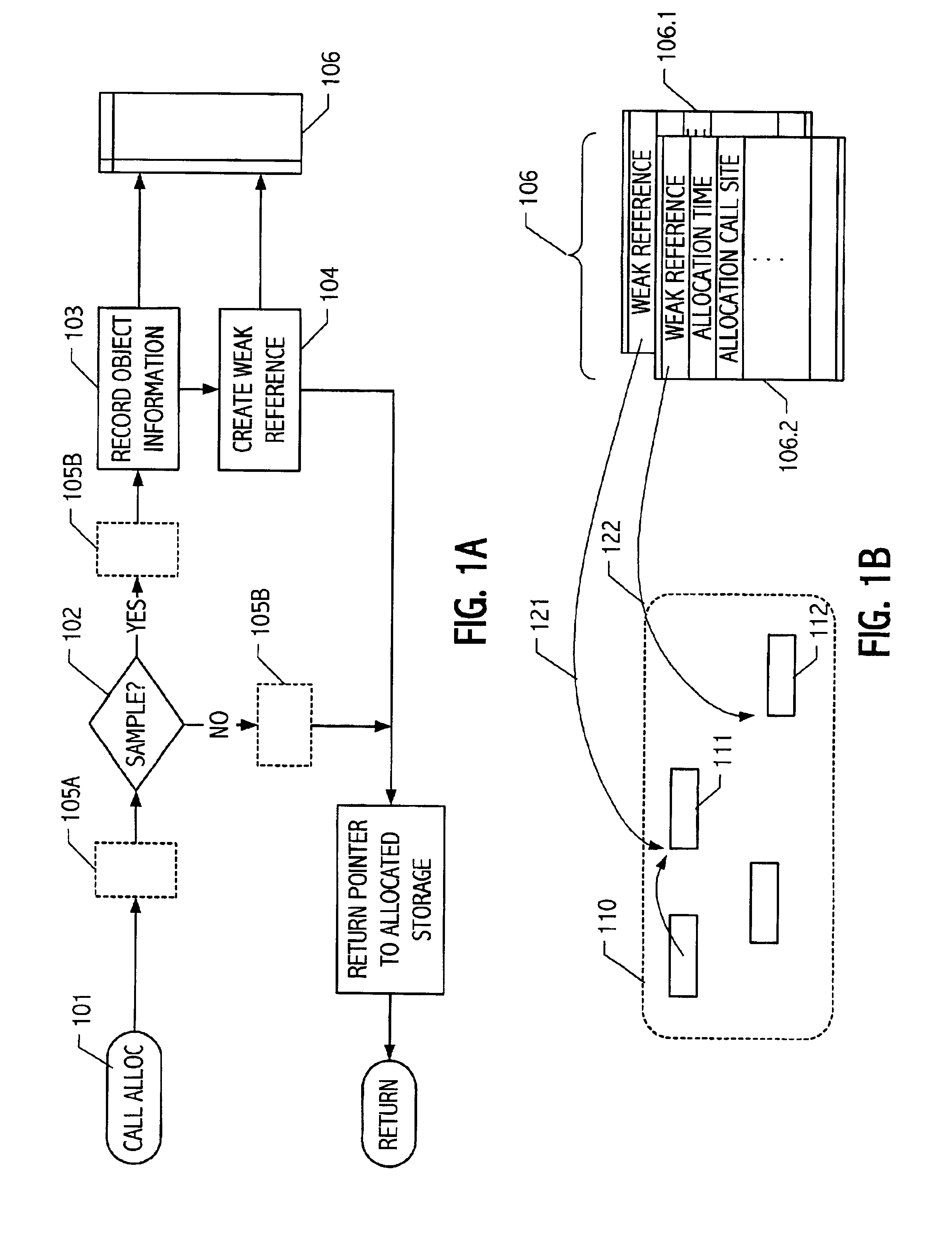Object sampling technique for runtime observations of representative instances thereof
a software object and object technology, applied in the field of program execution behavior, can solve the problems of significant impact on the efficiency of certain automatic dynamic memory management systems (e.g., garbage collectors), unsatisfactory overhead, and low overhead
- Summary
- Abstract
- Description
- Claims
- Application Information
AI Technical Summary
Benefits of technology
Problems solved by technology
Method used
Image
Examples
Embodiment Construction
)
The description that follows presents a set of techniques, objects, functional sequences and data structures associated with an object sampling technique employing weak references. In particular, implementations are described in which object lifetime statistics are sampled and employed to improve object allocation and collection in a dynamic memory management system that builds on generational garbage collection techniques. Applications to dynamic adaptive pre-tenuring are described in some detail and provide a useful descriptive context. However, more generally, the techniques, objects, functional sequences and data structures described herein may be employed in a variety of other contexts to provide efficient sampling of objects during or toward the end of respective lifetimes thereof. For example, in addition to pre-tenuring or promoting an object into an older generation of objects, the described techniques may be employed to improve placement or movement of objects (e.g., at a...
PUM
 Login to View More
Login to View More Abstract
Description
Claims
Application Information
 Login to View More
Login to View More - R&D
- Intellectual Property
- Life Sciences
- Materials
- Tech Scout
- Unparalleled Data Quality
- Higher Quality Content
- 60% Fewer Hallucinations
Browse by: Latest US Patents, China's latest patents, Technical Efficacy Thesaurus, Application Domain, Technology Topic, Popular Technical Reports.
© 2025 PatSnap. All rights reserved.Legal|Privacy policy|Modern Slavery Act Transparency Statement|Sitemap|About US| Contact US: help@patsnap.com



